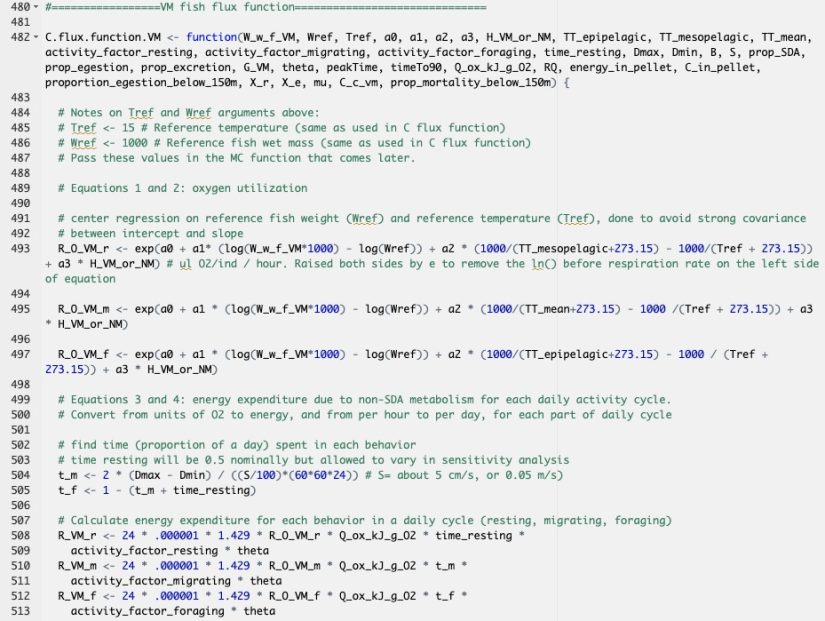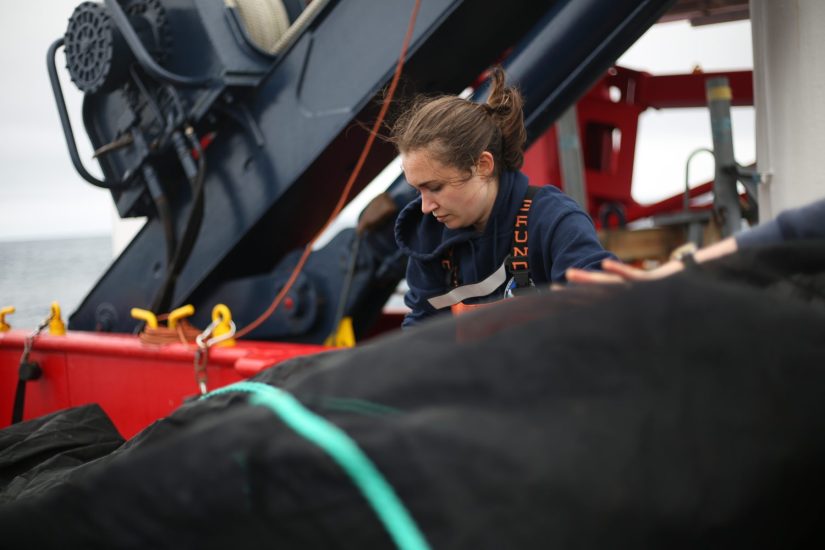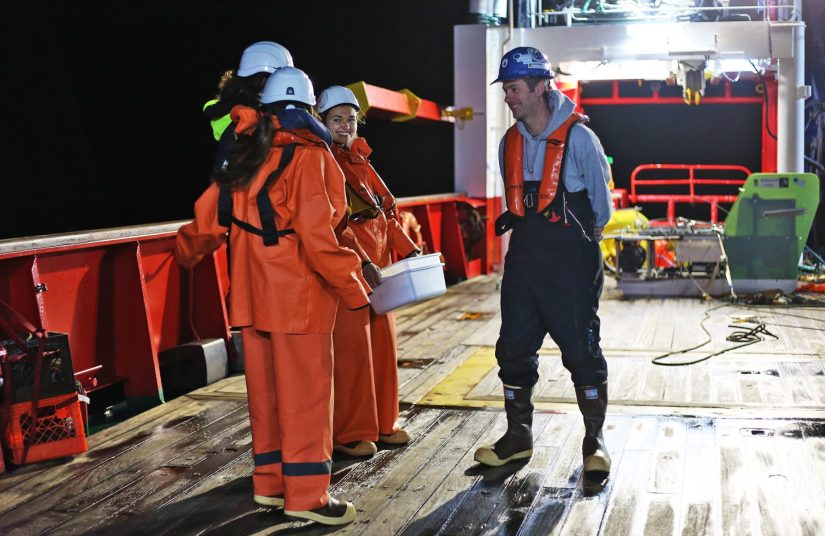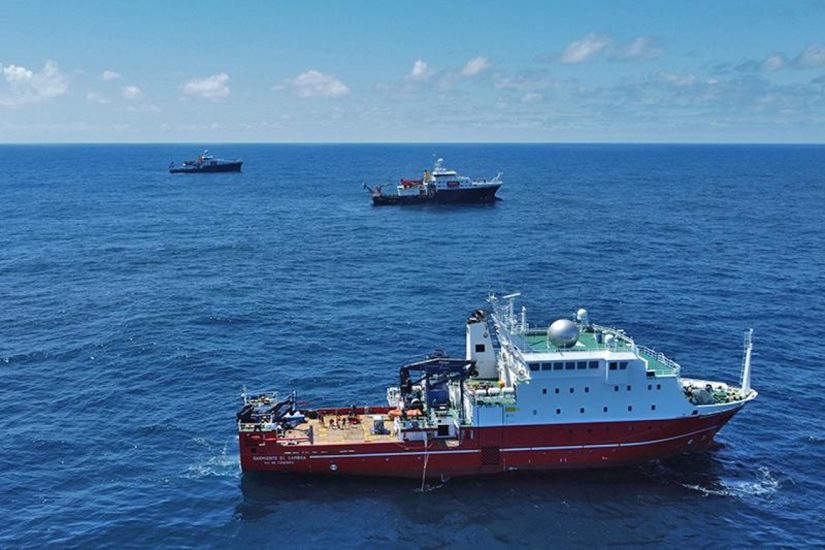Diving deep into how fish impact carbon cycling in the ocean
Recently featured in Hakai Magazine’s article “All The Fish We Cannot See”, SAFS PhD student Helena McMonagle is conducting a deep dive into a hidden cache of fish that might play an unexpected role in how the ocean sequesters carbon. We caught up with Helena to find out more about it.
Since starting this research in 2019, I’ve been using data collected at sea and in the lab, along with bioenergetic models, to estimate how much carbon these mesopelagic fish, such as lanternfish, transport from surface waters into the twilight zone. Also known as the mesopelagic zone, the twilight zone spans from roughly 200-1000 meters (roughly a tenth to a half mile deep) and comprises the part of the ocean where there is still some sunlight, but not enough to support photosynthesis.
Despite this lack of primary production (the biomass generated by photosynthetic organisms like the microscopic, plant-like organisms known as phytoplankton), there is still a large biomass of fish and other marine life in this part of the ocean. Many of these twilight zone animals perform diel vertical migration, in which billions of fish and zooplankton all over the globe swim from the mesopelagic zone to the sea surface to feed where there is more food available. After filling their stomachs at night, they swim back down to the mesopelagic zone to hide from visual predators during the day.
At these deep depths, where carbon can be stored for longer time periods than if it stays near the sea surface, they release much of the carbon they consumed the night before by breathing out carbon dioxide, pooping, and in some cases getting eaten by predators that stay in the deep ocean, thus moving that carbon deeper.

One of the most abundant types of mesopelagic fishes that performs this daily migration is the lanternfish (not to be confused with the rarer anglerfish), a family of fish that includes almost 250 species. With my colleagues Tim Essington (SAFS), Joel Llopiz (Woods Hole Oceanographic Institution) and Ray Hilborn (SAFS), we found that estimations of how much carbon a single fish, like a lanternfish, transports each day into the twilight zone is associated with about a 6 fold uncertainty (McMonagle et al. 2023), which can be constrained a little further with great data coverage from the specific location where you’re estimating the carbon transport of that fish. Even then, scaling up to how much carbon entire populations of these fishes transport requires fish biomass estimation at a given study site, and biomass estimation is associated with even more uncertainty than all the bioenergetic uncertainties for an individual fish combined, based on preliminary results from a study that our team is currently working on.
As a result, even in a well-studied area, there can be well over an order of magnitude of uncertainty in the contribution of fish to biologically-driven carbon transport. One of these rare, well-studied areas is the Porcupine Abyssal Plain Sustained Observatory, which is located in the Northeast Atlantic, which has both long-term data collection as well as focused cruise efforts like one that I took part in during 2021.
This huge uncertainty from both biomass and bioenergetic uncertainty is based on preliminary results from my current project using data from the 2021 cruise. This data was gathered on board a Spanish research vessel operated by CSIC (Spanish National Research Council) in Spain, which was led by NASA EXPORTS (EXport Processes in the Ocean from RemoTe Sensing) and the WHOI Ocean Twilight Zone (OTZ) project. My fellowship funding was provided by the National Science Foundation’s (NSF) Graduate Research Fellowship Program.
Apart from biological carbon transport, physical and chemical processes also play a major role in moving dissolved carbon dioxide from the sea surface into the deep ocean, and together some portion of that carbon that is transported is also sequestered. Translating carbon transport into carbon sequestration is another can of worms in itself, because carbon transported into the twilight zone is not necessarily sequestered from the atmosphere on climate-relevant time scales. Therefore, the role that fish play in not only moving carbon deep, but locking it up from the atmosphere on climate-relevant time scales, is a topic that is largely still unstudied and unknown. 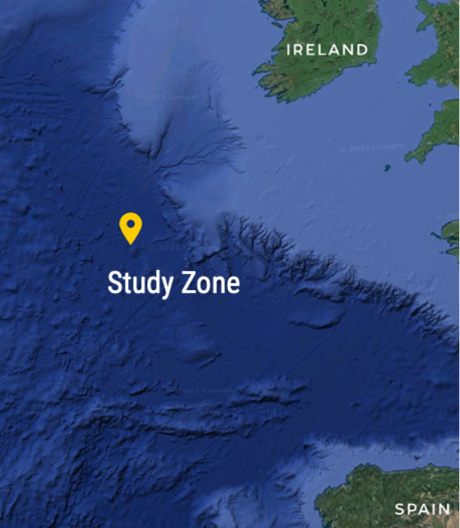
Acknowledging the difference between carbon transport within the ocean and carbon drawdown and sequestration from the atmosphere is part of my current research on fish carbon transport. My goal is to rigorously study the role of fish in carbon transport while avoiding miscommunication or misinterpretation of the carbon transport research into the realm of climate policy and carbon offsets, as this potential application will require much more research that we have currently available to verify with any certainty.
There is a large suite of climate mitigation strategies that we already know with high certainty will reduce atmospheric carbon dioxide concentrations and mitigate climate change. Although no one solution is a silver bullet that will curb human-driven climate change on its own, it’s important to urgently prioritize well-established climate mitigation strategies in climate policy, while exploring other mechanisms of carbon transport and carbon sequestration in the meantime in the research sector.
